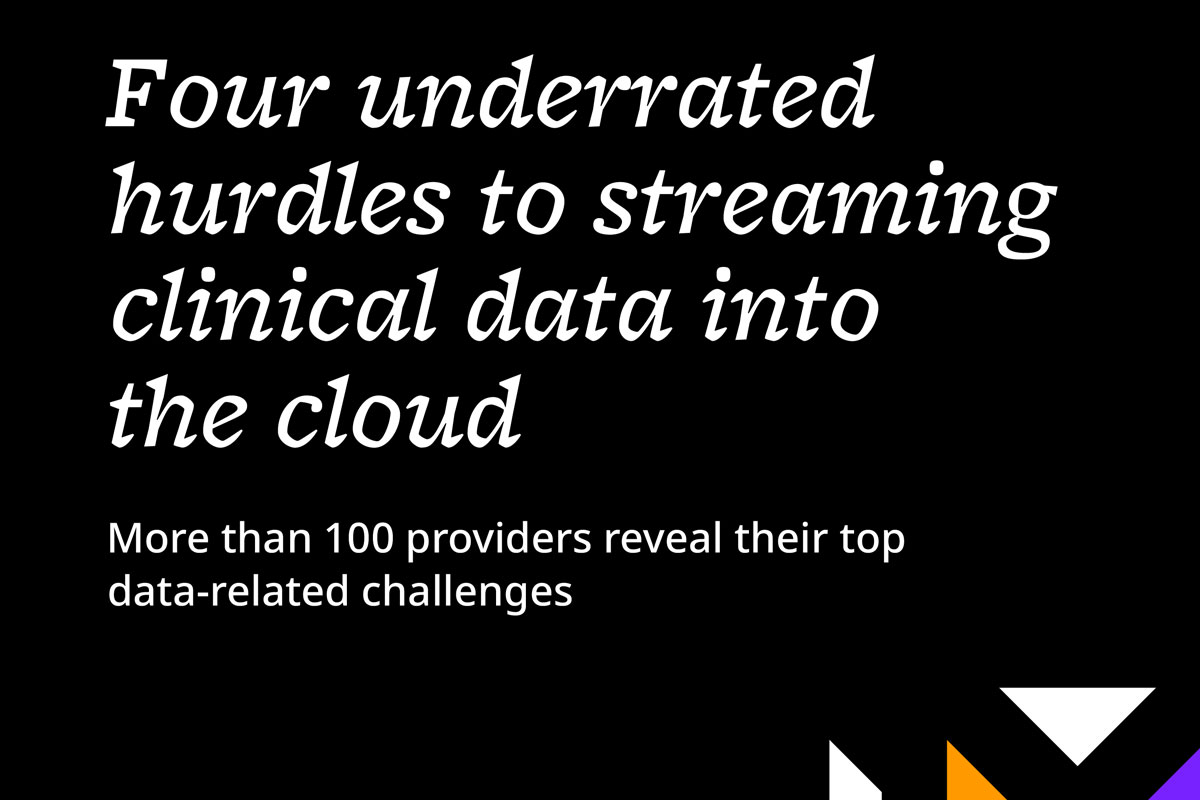Proprietary new research is live - how Redox is exposing some of the underrated data hurdles of cloud and AI adoption in healthcare
Jun 02, 2023

As interoperability regulation, value-based care, and shared-risk models continue to evolve and gain traction, provider organizations are exploring more holistic care models, including building longitudinal patient views to drive better outcomes for their patient populations. The major cloud providers (Google Cloud, AWS, and Microsoft Azure – all of which are Redox partners!) offer tools and technology across the healthcare spectrum so that organizations can achieve incredible outcomes, from advancing research and optimizing the supply chain, to powering data-driven insights to impact clinical and operational decisions.
Moving healthcare data into cloud clinical data repositories offers unprecedented access for organizations to securely centralize and scale the management of millions of patient records, eliminating silos of patient data that have previously been the standard. In addition to impacting table-stakes business functions like cost efficiency and scalability, the cloud is democratizing access to game-changing healthcare tools to improve the lives of patients and providers. The advent of cloud has made previously unimaginable outcomes possible – and Redox is excited to share proprietary research on how provider organizations are leveraging cloud as an integral component of their business strategies.
Redox recently released our report “Four underrated hurdles to streaming clinical data into the cloud.” We collaborated with Sage Growth Partners to survey more than 100 technology decision-makers from large academic medical centers and multi-hospital health systems. Through this work, we sought to better understand cloud use cases, desired business outcomes, and challenges integrating with electronic health records and other legacy systems to ingest real-time clinical data into the cloud.

Patient engagement, improving core operations, and population health were reported as the most popular cloud use cases among provider organizations. In the future, using cloud technology to accelerate treatment and diagnosis is projected to be a top use case.
95% of survey respondents shared that cloud will be impactful to their business strategy over the next 24 months.
The survey uncovered a variety of insights on the barriers to enabling these cloud use cases. While provider organizations are excited by cloud technology, and expect to use cloud to accelerate cost savings, efficiencies, and innovation, an overwhelming majority of respondents shared that they were unprepared for the challenges they faced in past cloud ingestion projects.
97% of provider executives stated that ingesting real-time clinical data is crucial to the enablement of their cloud use cases – but only 3% haven’t encountered any challenges when attempting to ingest clinical data into the cloud.
The cloud clinical data repositories of the top cloud services providers require that data is ingested and stored in the modern Fast Healthcare Interoperability Resources (FHIR®) standard to simplify the harmonization of disparate healthcare datasets and unlock easy access to analytics, AI, and advanced tools. But transforming data from multiple legacy standards can be a technically complex and time intensive process, and most organizations don’t have the in-house resources to manage these projects at scale.
Lack of data standards is a challenge. Lack of consistent data formatting within the standards is a challenge. The amount and types of data are a challenge. SVP of Health Informatics
When attempting to execute on legacy data transformation and cloud ingestion projects, survey respondents shared that their top 3 challenges are:
Human capital (68%) - lack of in-house expertise and/or human resources to map legacy standards to FHIR and maintain integrations
Financial capital (52%) - lack of budget for data translation and ingestion
Technical capital (44%) - lack of technology infrastructure to facilitate translation and ingestion at scale
The full report explores each of these challenges in depth, helping organizations looking to undergo a future cloud data ingestion project prepare for what to expect.
Redox also hosted a conversation with Executives for Health Innovation to share a preview of the survey findings, as well as hear responses and reactions from the healthcare community. EHI’s moderator Emma Valinsk was joined in conversation by James Buntrock from Mayo Clinic, Mitch Kwiatkowski from Marshfield Clinic Health System, and Anand Saokar from Wellstar.
The event started with a discussion on the overall impact of cloud to healthcare, including current versus future business impacts and use cases. The panelists concurred with survey results that executives expect big future jumps in innovation, engagement, and treatment enabled by cloud. In particular, treatment and diagnosis outcomes enabled through cloud are projected to positively impact SDOH (social determinants of health) and health equity.
A large portion of the conversation centered on challenges to data ingestion into the cloud, including examples of the panelists’ past projects and learnings along the way. Mapping legacy data standards to FHIR was noted as a major barrier, especially due to a lack of expertise and the time and resources necessary to onboard staff to utilizing FHIR and cloud technology.
James Buntrock from Mayo Clinic shared learnings from their onboarding process with Google Cloud. “Getting people up to speed and trained is a big limitation, and takes time and investment for your workforce. It’s not an overnight process - this is a cloud technology constraint. You need to not only know about the cloud, but about clinical workflows and data.”
Anand Saokar shared Wellstar’s experience working with Redox to map legacy standards to FHIR to enable data integration in the cloud.
We won’t spoil it for readers, but there was a fantastic Q&A with Emma and the panelists at the end of the session. Watch a full replay of the virtual event here.
